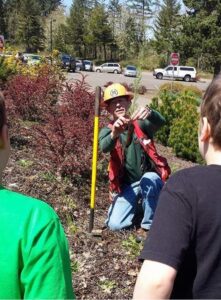
Work. Play. Renew.
Ask a forester: Burning after a harvest
Oregon Forests Forever has a well-informed, active and engaged community that regularly poses important questions.
community that regularly poses important questions.
There are so many great topics you want to learn more about, so we’ve decided to start a new series, “Ask a forester.” To kick off the series we’re talking with Hampton Lumber Forester Dale Claassen about burning after a harvest.
Q: Is burning debris after a harvest more harmful to the environment than if left alone?
A: I help manage Hampton’s forestlands so I thought I’d provide some additional information to this conversation. I have 30+ years of experience as a professional forester in Oregon’s Coast Range and am very proud of the work my industry does to provide the wood products, recreational lands, clean water and wildlife habitat that Oregonians appreciate.
I burn leftover forest debris after harvest because it is an efficient way to prepare the site for future replanting, and it removes the fuel for future wildfires. Under the right conditions and in accordance with Oregon’s Smoke Management Plan, fire professionals and landowners work together to use fire as safely as possible. We pile limbs and smaller material to provide us more planting spots across a harvest unit; larger material is left unburned to provide habitat for ground-dwelling wildlife and to decompose back into the soil.
Wildfires sometimes burn everything in their path and emit high amounts of carbon…including carbon stored in houses. Pile burning greatly limits the amount of carbon emitted “per acre”.
Burn pile spots create nutrient concentrations that grow trees exceptionally well. At Hampton, we cover piles to both speed up lighting them, and to speed up combustion which lowers emissions.
If you have more questions or thoughts about forestry and management practices, be sure to send them to Oregon Forests Forever for this new series!